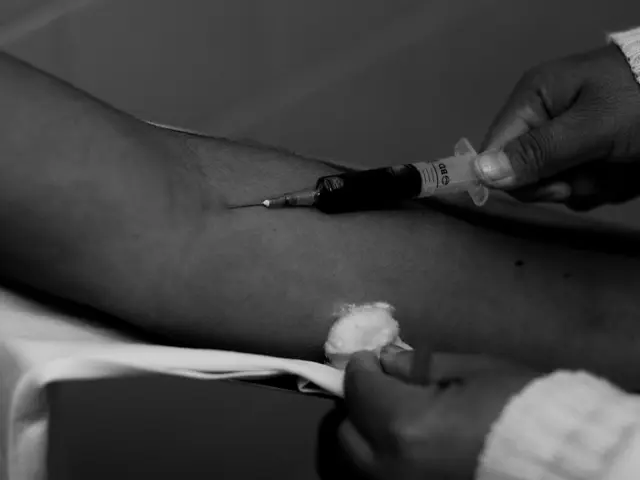Causes, symptoms, and remedies for elevated diastolic blood pressure
Isolated diastolic hypertension (IDH) is a type of hypertension where only the diastolic blood pressure (the bottom number in a blood pressure reading) is elevated, while the systolic pressure (the top number) remains normal. This condition, which accounts for approximately half of all hypertension cases, has been linked to an increased risk of subsequent cardiovascular events.
Several factors contribute to the development of IDH. Obesity, high triglycerides, smoking, and alcohol consumption are well-established risk factors. However, there are other factors that may also play a role, such as:
- Genetic and epigenetic factors: A multifactorial etiology involving genetic predisposition and epigenetic modifications can influence IDH development.
- Positive family history: Having close relatives with hypertension increases the risk, indicating inherited susceptibility.
- Race and ethnicity: Certain racial and ethnic groups have higher risk profiles for hypertension, which may extend to IDH.
- Advanced age: While IDH often occurs in younger adults, age-related vascular changes can influence blood pressure patterns, possibly contributing to IDH in some cases.
- Uncontrolled diabetes: Metabolic disturbances associated with diabetes may affect vascular resistance and contribute to diastolic hypertension.
- Diet: A diet high in sodium and low in potassium is a modifiable risk factor for hypertension, including IDH.
- Physical inactivity: Sedentary lifestyle contributes to cardiovascular risk factors and may promote IDH.
- Psychological stress: Chronic stress can elevate sympathetic nervous system activity, increasing peripheral resistance and diastolic pressure.
- Secondary causes: Although rare in isolated forms, secondary hypertension causes like congenital heart disease or neonatal complications (e.g., prematurity, very low birth weight) may contribute.
People with conditions such as diabetes, chronic kidney disease, and low thyroid hormone levels may also be at risk of developing IDH.
In terms of treatment, doctors may recommend medications such as calcium channel blockers, angiotensin converting enzyme inhibitors, angiotensin receptor blockers, and diuretics. However, lifestyle changes can also be effective. These may include reducing or limiting alcohol, maintaining or achieving a moderate weight, exercising regularly, eating a balanced diet, avoiding tobacco, getting enough sleep, and managing stress.
It's important to note that while there is limited direct evidence on IDH-specific factors beyond those mentioned, these general hypertension risk factors are relevant to IDH as well. Other conditions like artery stiffness and hypothyroidism, more commonly linked to isolated systolic hypertension, are less implicated in IDH.
In summary, understanding the risk factors for IDH is crucial for prevention and early intervention. By adopting a healthy lifestyle and being aware of potential genetic and environmental factors, individuals can reduce their risk of developing this condition and its associated health complications.
- Genetic and epigenetic factors can influence the development of Isolated diastolic hypertension (IDH), with a multifactorial etiology potentially involving such variations.
- People living with medical conditions such as other heart diseases, diabetes, chronic kidney disease, and low thyroid hormone levels may be at elevated risk of developing IDH.
- Science has shown that lifestyle changes can be effective in treating IDH, including reducing alcohol consumption, achieving or maintaining a moderate weight, regular exercise, a balanced diet, avoiding tobacco, getting sufficient sleep, and stress management.
- The treatment for IDH may involve medications like calcium channel blockers, angiotensin converting enzyme inhibitors, angiotensin receptor blockers, and diuretics, in addition to implementing health and wellness practices such as fitness and exercise, and nutrition.
- Although IDH-specific factors are not as extensively researched as their counterparts in general hypertension, managing chronic diseases, cardiovascular health, and addressing factors like artery stiffness and hypothyroidism remains important for IDH prevention and early intervention.








